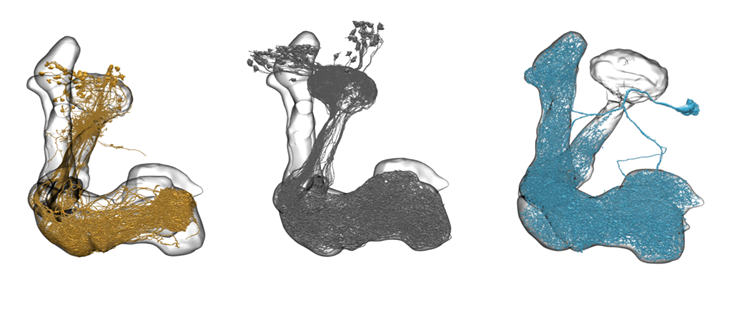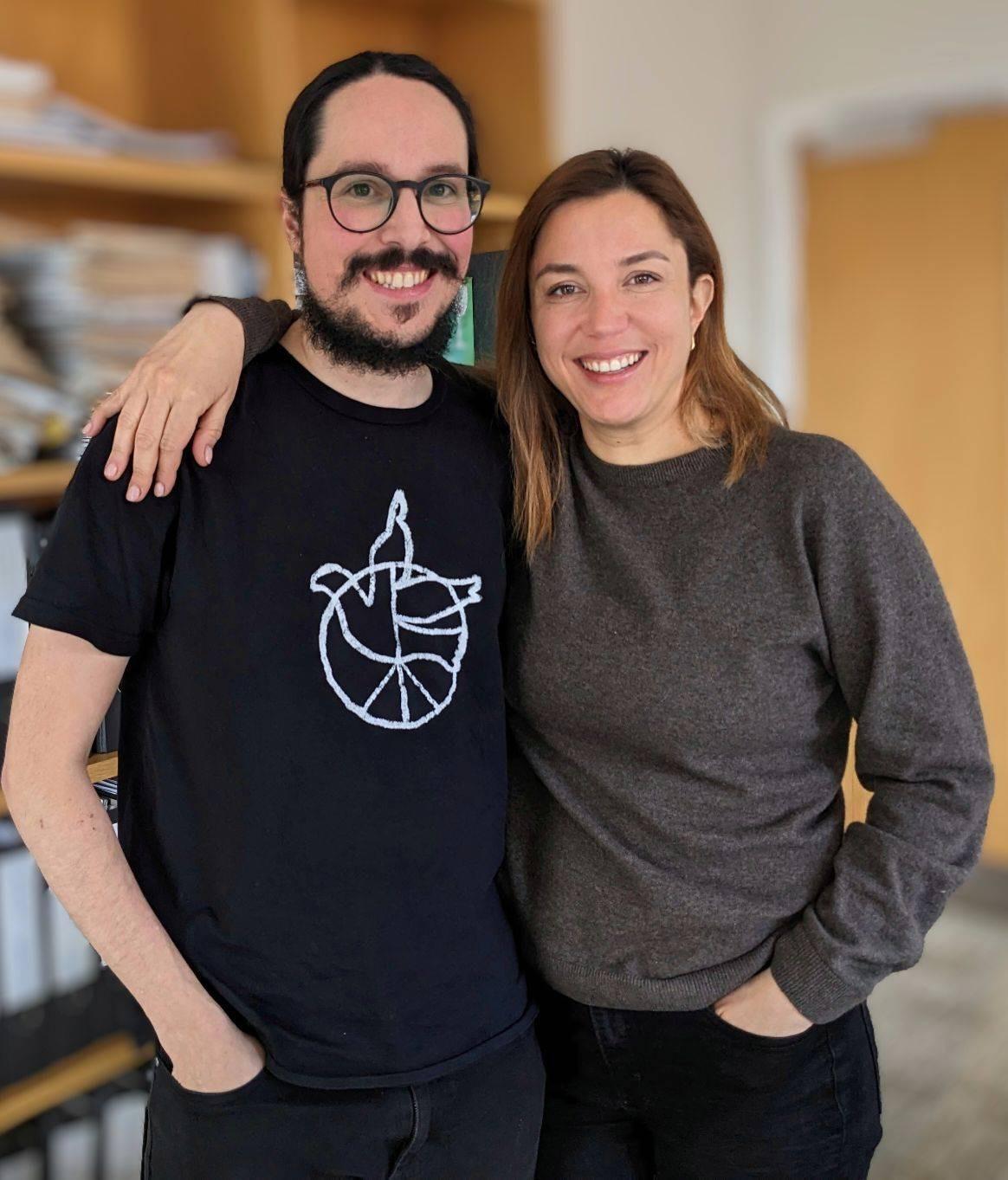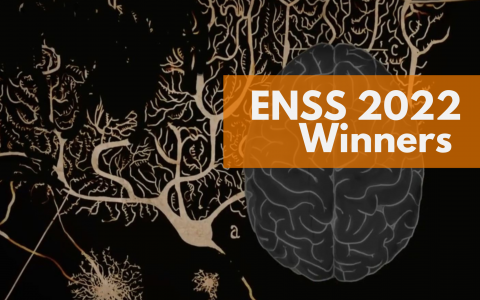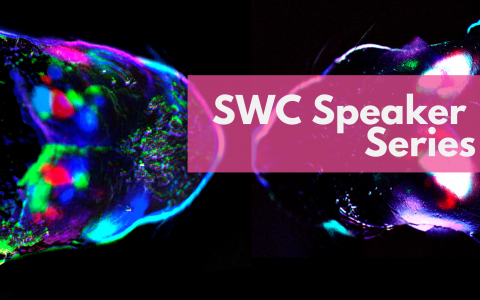
Multisensory learning: insights from fruit flies
An interview with Dr Zeynep Okray and Dr Pedro Jacob, University of Oxford, conducted by April Cashin-Garbutt
As teachers are well-aware, learning through multiple senses improves memory. But how does the brain integrate sensory information from different modalities during learning and in what way does this relate to memory performance? In this Q&A, SWC Emerging Neuroscientist Seminar Series (ENSS) speaker Dr Zeynep Okray and her research colleague Dr Pedro Jacob, explain their research in fruit flies to tackle these big research questions.
Where did you first hear about the SWC Emerging Neuroscientists Seminar Series (ENSS) and what prompted you to apply?
We first heard about the SWC ENSS programme while at the FENS Forum in Paris last year. We found it a really refreshing initiative as it is rare for institutes to allow postdocs and students to choose who to invite to speak, and select speakers that are at postdoctoral level. The application process itself also was very transparent and fair as the panel only uses the abstracts to decide, rather than your publication record or institution.
How useful has the experience been (so far)?
It has been very useful for multiple reasons. Often people unintentionally pigeonhole themselves into thinking one way about problems. For example, we tend to read papers in the same model organism as the one we study ourselves.
I really enjoyed the questions from the audience during my talk as people were seeing my work from the viewpoint of someone that is not familiar with fruit flies (as research at the SWC predominantly focuses on rodents). For me, it is important to think about the fundamentals that we can all agree on and that spark all of our interests.
What advice would you give to those considering applying to ENSS 2023?
Apply! The SWC is a very prestigious institute with lots of cutting-edge research and through ENSS you could have the chance to come and discuss your research and get feedback. I’ve been able to discuss what my research would look like if we were to study the questions in mammalian models and any existing parallels. This visit has allowed me to ask pertinent questions to people who work on memory in rodents in SWC.
The ENSS application also helps to think about how accessible and relevant your work is to a broader audience. It is very encouraging that the SWC blind the process so they are not influenced by your institute.
How does multisensory experience relate to learning and memory?
Multisensory experience improves learning and memory. Information that is received via multiple senses does this because our nervous systems have evolved to integrate sensory information from different modalities to create representations of whole scenes or whole objects. Multisensory information helps animals more effectively make decisions and guide their behaviour.

3-dimensional reconstructions of neurons in the mushroom body: learning-relevant cells receiving visual input (left), receiving olfactory input (middle), and a large serotonergic neuron which spans the mushroom body and connects the two sensory streams (right)
Are the neural mechanisms that bind sensory features during learning currently known?
This is what we set out to identify. Due to its numerically simpler brain and genetic tractability, Drosophila melanogaster (fruit fly) is a powerful model in which we can seek answers to complex questions like this one, and uncover universally relevant neuronal principles of learning and memory. We are able to capitalise on an existing system of knowledge about a prominent structure in the fruit fly brain called the mushroom body, the centre for learning and memory.
The next step was for us to establish paradigms to study how learning would change if there are more inputs from different senses.
Can you please explain the new experimental learning and memory paradigm you developed in Drosophila melanogaster?
We used the standard T-maze apparatus established in the learning and memory field almost 50 years ago, but we added some visual stimulation by using LEDs of different colours. We trained flies to associate odours, colours, or odours and colours, with a sugar reward or shock reinforcer. Then we evaluated their memory performance at several time points to see how the dynamics of unisensory and multisensory memories were different.
We next set out to identify neuronal populations relevant for the formation and retrieval of multisensory memories. The genetic tools we have available in fruit flies allow us to manipulate neuronal function with high spatial and temporal precision, which helps us effectively probe the circuitry underlying this behaviour.

Experimental setup to study multisensory learning and memory in Drosophila: flies are trained (left) and tested (right) in a T-maze using colours and odours.
Can you tell us more about your key findings?
We found that learning with multiple senses generated memories stronger and longer-lasting than those formed after learning with a single sense. This improvement in memory after multisensory learning held true even when the memory was recalled with one sense. Interestingly, multisensory learning confers an important change in learning-relevant neurons that respond to sensory information; visual selective neurons become activated by odours after multi-sensory training and vice versa. This expansion of the responsiveness across cells is what ultimately makes the memory more powerful. We identified a mechanism involving serotonin that changes cells from responding to one sense only to responding to two senses.
Is this why smells can bring back such strong memories?
Yes! Our brains have the ability to parse together information to make scenes. This is what pattern completion is to some extent. If you see a plane flying, but then there is a cloud, your mind knows the trajectory of where that plane is going to be. You brain can predict things like this as it has a whole understanding of what is happening.
Do your research findings have implications for human memory and learning?
Our findings about the involvement of serotonin is key in this respect, because we know people that experience schizophrenia and autism can have problems with multisensory integration, due to the dysregulation of serotonin signalling in the brain. Also, the serotonergic receptor that we identified (5-HT2A) happens to be one of the main targets of hallucinogenics.
Recently there has been research into whether the hallucinogen psilocybin could be used to help treat people with depression and our findings could have relevance to this. What is it about connecting different neuronal circuits that could help us break out of depression? We don’t yet, but this is an interesting avenue to explore.
The way that evolution works is it capitalises on existing mechanisms. A lot of principles are conserved across species and it’s likely that serotonin function in flies will elucidate its role in humans . Work in flies has proved relevant to human biology and health, with several Nobel Prizes for work conducted in Drosophila.
Do you think the Covid-19 pandemic affected multisensory learning and memory as people were unable to go to different locations?
I would assume so. Recall of memories can vary depending on the information available. Locations can give memories more context and anchor them in your mind more.
Would it be beneficial to introduce more multisensory learning techniques in education?
Educators have known about this way before science caught up! It is such an intuitive thing that we can remember more when we have more information. People have been utilising this and there are specific strategies that educators use. Our findings might give more insight into what might happen if it goes wrong and how can we leverage it more. Sometimes the neural basis can be extended back into the behaviour and we might be able to think of behavioural modifications that can improve what we are doing.
Do your findings explain why it is sometimes easier to remember more information than less?
If you have two pieces of information with very low salience, for example if you give flies a very faint smell and a very faint colour, they will not learn the information easily if there is only the smell or only the colour. However, if you put them together then the fly is able to learn and remember the information.
What’s the next piece of the puzzle your research is going to tackle?
Because we work on flies, we have the freedom to jump from one big question to another. It is not uncommon for us to look at books from the 1950’s and see what people were hypothesizing at the time and now be able to test those theories with the techniques and technologies available to us.
For this particular project, there are many outstanding questions. We want to understand more about the changes in the learning-relevant neurons after multisensory training and elucidate the downstream effects of these changes. There are some counterintuitive findings that we need to do more experiments to explain.

About Dr Zeynep Okray
Zeynep Okray joined the University of Oxford in 2017 as an EMBO postdoctoral fellow in Scott Waddell's laboratory, at the Centre for Neural Circuits and Behaviour. Her main research interest lies in how a defined set of neural circuits can encode for and accommodate different types of memory.
Zeynep obtained her undergraduate degree from the University of Chicago and her doctorate from the University of Leuven/VIB, where she worked in the laboratory of Bassem Hassan, focusing on the genetic mechanisms of Fragile X Syndrome. Zeynep is passionate about leveraging the power of the fruit fly model (Drosophila melanogaster) to address fundamental questions exploring brain function.
About Dr Pedro Jacob
Pedro Jacob joined the University of Oxford in 2017 as a postdoctoral fellow in Scott Waddell's laboratory, at the Centre for Neural Circuits and Behaviour. His main research interest lies on how behavioural flexibility arises and evolves. Dynamically changing environments demand that animals constantly adapt behaviour and update memories to incorporating new information. Understanding the changes in neural circuits that allows this is crucial.
Pedro obtained his undergraduate degree from the University of Lisbon and his doctorate from the University of Cambridge, where he worked in the laboratory of Berthold Hedwig, studying the neural circuit evolution of the song system in crickets.


